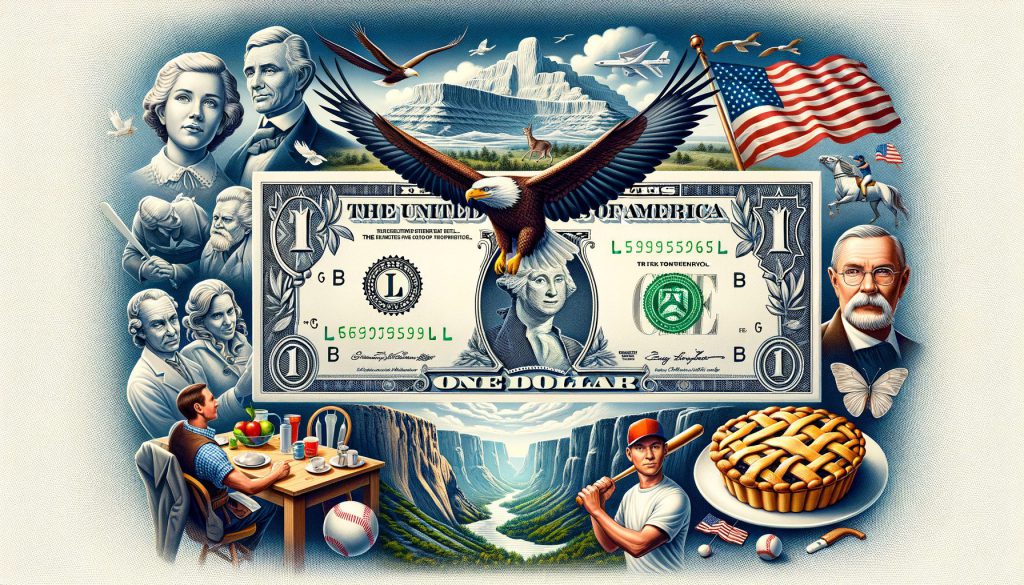US Nears Soft Landing: GDP Dips While Consumer Spending Defies Gravity
The US economy walks a tightrope—GDP stumbles but Main Street keeps swiping.
GDP Takes a Hit, Wallets Stay Open
Q2 numbers show contraction, yet consumer spending laughs in the face of recession fears. Retail therapy beats economic theory—again.
The Fed's Delicate Dance
Powell & Co. eye inflation targets while Americans keep ordering artisanal avocado toast via DoorDash. Soft landing? More like a controlled burn.
Wall Street vs. Reality
Traders price in rate cuts as everyday folks ignore macro warnings. Because nothing says 'rational market' like crypto rallies and meme stock revivals.
*Cynical finance jab*: Meanwhile, hedge funds still charge 2-and-20 for this 'analysis.'
Economic Indicators Point to Controlled Slowdown

GDP Growth Shows Strategic Deceleration
The current GDP figures reveal an interesting pattern that supports the soft landing thesis. At $29.96 trillion, the US economy posted a 0.80% increase from the previous quarter and also managed a 4.67% rise compared to the same quarter last year. This GDP growth slowdown is being carefully monitored by policymakers who view it as a necessary cooling rather than a warning sign.
The controlled nature of this deceleration suggests that the soft landing scenario is unfolding as intended. Economic data shows that while growth is moderating, it’s doing so at a pace that allows for adjustment without triggering severe disruptions.
Federal Reserve Interest Rates Drive Cooling
The Federal Reserve has implemented measured and strategic interest rate policies during this cycle. Federal Reserve Chair Jerome Powell has highlighted the Fed’s successful soft landing experiences in earlier periods, specifically citing victories in 1965 and 1984.
In 1965 and 1984, the Fed managed to make soft landings, and policymakers were implementing a third one in 2020 until COVID-19 derailed their plans. This gives us a good case history in understanding the current soft landing experiment being run.
The Fed’s history shows mixed results but demonstrates that policymakers can achieve this balance of allowing growth while controlling inflation when they maintain the right conditions and exercise discipline in managing federal reserve interest rates.
Inflation Control Measures Take Effect
Currently inflation rates are trending downward, which represents a very essential part of any soft landing. The Federal Reserve is successfully implementing inflation control by strategically increasing rates, and these efforts are producing noticeable results. Consumer spending continues to hold up despite the cooling measures, and this demonstrates that the economy can handle the required adjustments.
Authorities have tamed inflation through a gradual but successful process. Economic indicators show that price pressures are easing without the dramatic slowdown that hard landings typically cause. Policymakers must carefully balance this approach to maintain economic stability while addressing inflationary concerns.
Economic Recession Risk Remains Limited
Economists use past records as the foundation for evaluating present-day economic recession risk. Five previous instances when inflation reached double digits above 5 percent – 1970, 1974, 1980, 1990, and 2008 – all preceded recessions. However, the current situation displays some major qualities that indicate a soft landing can occur.
The labor market is not moving on a very dangerous trend because the unemployment rates are low and employment is increasing, but at a decreasing rate. Such strength of employment is one of the most prominent indicators that break the similarity between the current situation and the previous situations that caused recession. Industry projections indicate that there will be a reduced growth rate of GDP in the year 2025, and crucially, not the contraction of the economy.
Such a difference is essential in comprehending why numerous economists consider the soft landing scenario not only possible, but probable.
Former Federal Reserve chair Ben Bernanke was clear about the fact that:
This analogy underlines the fact that a soft landing is not easy to achieve, yet the modern economic reality indicates that the policymakers are coping with all the difficulties. This is an ideal state of affairs brought about by a slowdown in the GDP growth rate which is well controlled, inflation well checked, well-developed policy of interest rates and federal reserve along with limited risks of economic recession.

